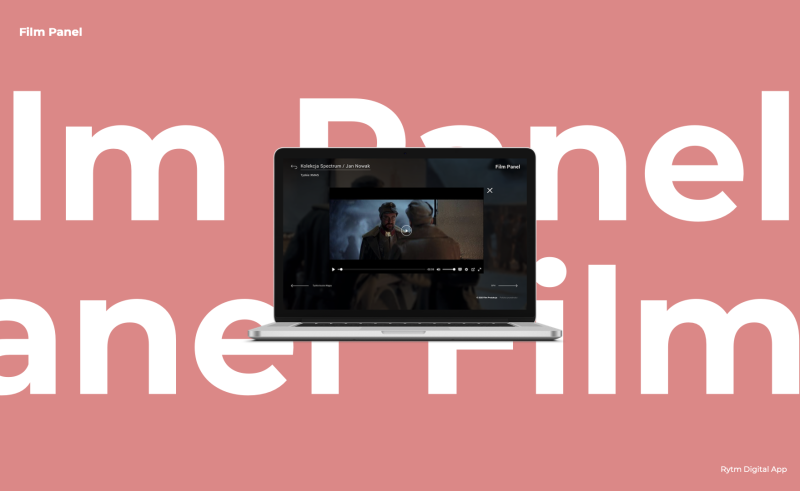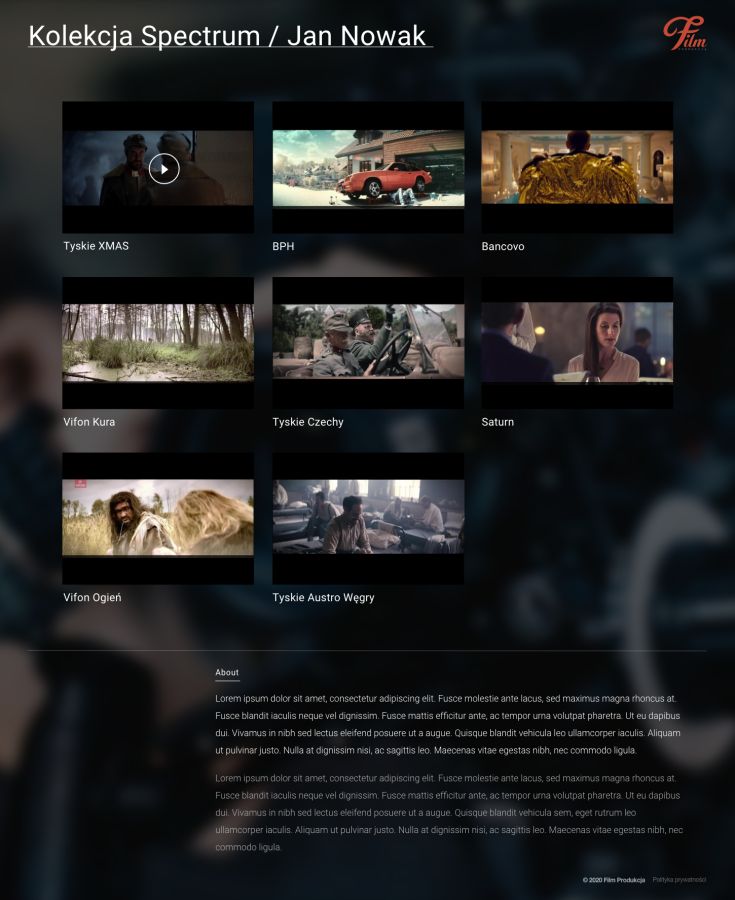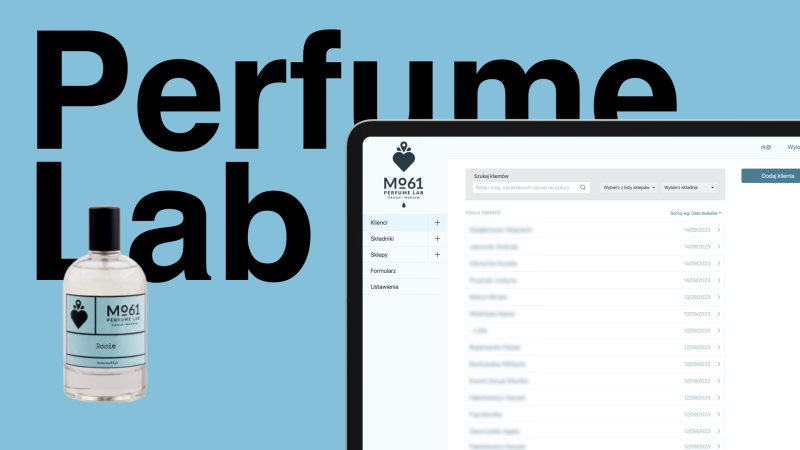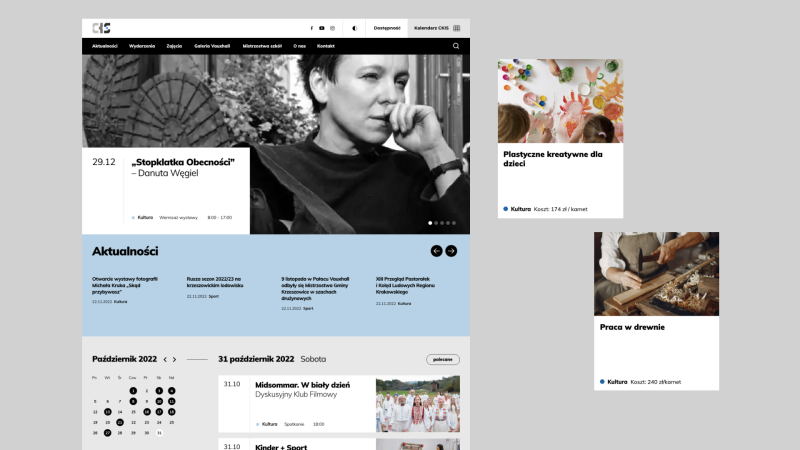In three examples, we describe our tasks and approach in each, the challenges we faced, how we addressed them, and the outcomes we achieved.
What is digitalization, and is it possible to digitize a process?
Before discussing process digitization, let's touch on digitalization itself, which involves transforming data, information, content, and physical objects from analog form to their digital counterparts. This concept has been encountered by employees in various institutions, as archiving and digitizing resources have been important and time-consuming areas of activity for many years. An example of this can be seen in the platform of the Center for Contemporary Art Ujazdowski Castle – Mediateka – a digital archive rich in multimedia resources and documents, thus making digitized resources more accessible.
Processes can also undergo digitalization – be it business, operational, customer service, or logistical processes – optimizing them can enhance team efficiency, service quality, streamline daily operations, and deliver tangible benefits almost immediately upon implementation.

A perfect example of such a realization is the web application designed and implemented by our team for managing a database of films and directors, allowing the creation of an unlimited number of collections. We created and deployed this tool for a film production company with an extensive portfolio of films, including thousands of commercials produced since the 1990s. This highlights the extensive portfolio of films they work with daily and the vast database of potential directors and their rich portfolios they deal with.
The web application we delivered serves as a tool to build a comprehensive database of directors. It aggregates director profiles in a digital format, all in one place. A director's profile includes a photo, contact information, bio, and related projects. Based on added films and director profiles in the application, users can create collections. Collections can be thematic, such as a compilation of projects for banks, music videos, commercials for the automotive industry, holiday advertisements, and more. A collection can also represent the body of work of a specific director.
The application allows for the upload of an unlimited number of video files, easy addition, editing, and removal of director profiles, film records, and entire collections. What else does the application facilitate? It enables sorting of collections, directors, and films alphabetically or by the date of addition; searching by keyword; and generating links that open in a new window, providing a convenient 'quick view'.

The Director's Collection
Goals to Achieve and Benefits:
An important goal was to facilitate daily management of records, so focusing on the ergonomics of the web application was crucial for us. The digital environment we created had to be intuitive, fast, efficient, and functional. Thanks to the application, the client's team can conveniently update the ever-expanding database and quickly generate a link to the created collection. This link can be easily copied and forwarded in email correspondence or using any messenger. Thus, on one hand, the web application allows the client's team to operate efficiently and conveniently, while on the other hand, it facilitates communication with end-users to whom the created collection is presented.
We also aimed for the end-user to encounter an aesthetic and responsive content presentation upon clicking the link. Swift access to essential information and convenient exploration of the collection's content were crucial during the design of the views displayed in the browser after clicking the generated link.
What was our team's task?
It comprised several stages. The essence was a thorough analysis of the client's team needs and understanding the habits of the individuals who regularly use the application—understanding the workflow. Simultaneously, we comprehended the needs of the end-user, who would eventually click the generated and delivered link. Familiarizing ourselves with these expectations was the starting point for specifying the assumptions. One of the more significant expectations that our team had to meet was enabling flexible management of created records—films added to the web application, profiles of directors, collections—where modification, dynamic changes, deletion, and interconnection had to be useful and ergonomic.
Thanks to user stories mapping and analysis of the target content, we could plan the information architecture of the application, make numerous decisions regarding the structure and optimal placement of elements, and then design the user interface.
The developed user interface (the graphical user interface that enables user interaction with the application) included elements such as windows, buttons, icons, and lists. We took care of both UX and UI, ensuring that the user could easily find all elements and interact with them effortlessly.

Another example of a process we tackled with digitization is data management, for which we designed and implemented a 'recipe database'.
The recipe database developed by our team was created for a perfumery that designs custom fragrance compositions for its clients. In this task, the most crucial aspect was linking sensitive personal data with designed recipes and ensuring data security and ease of management. The core of the task was to develop a tool that allows for the accumulation of an extensive database and optimization of the links between personal data and custom recipes.
The tool enables searching the database, adding new entries, editing existing data, and managing multiple locations. Functionally, it was essential to implement the ability to create accounts with varying levels of permissions, as well as the development of a "recipe converter" by our team. A list of processes that the recipe database was to execute was outlined in our technical specification.
After the completion of the project and a period of usage, the implemented database was expanded with additional functionality—a digital form. This form can be displayed on a tablet and handed to the visiting client in the perfumery, allowing them to leave their signature. We ensured that the analog process of asking the client for a physical signature was optimized. The signature in the digital form is automatically linked to the existing record in the database (for returning customers) or creates a new record and establishes a connection with the signature. This improvement enables swift and secure data collection and storage.
In this task, it was crucial to implement a dedicated solution that addressed our client's specific needs.

In public institutions and cultural organizations, in addition to fulfilling their mission, they often offer services. Similar to the business sector, these processes can also be streamlined.
For the Culture and Sports Center in Krzeszowice, along with the implementation of their new website, we took on the task of optimizing the registration process for the activities they offer. The process, which previously required traditional handling—direct contact with interested individuals and analog coordination of payment—has been improved by us.
Managing Course Registrations
The tool we implemented for the Culture and Sports Center in Krzeszowice allows the creation of form templates and the quick association of forms with specific types of activities communicated on the website. This change enables the institution's team to use reusable form templates that are fully editable within one environment, as part of managing their website. Previously, registrations were handled through direct communication, which prolonged the process. Now, each registered participant receives a link for online payment, thanks to integrating our client's website with a payment gateway. Handling registrations in a digital form allows for full control over the number of participants, with the functionality to export data with a single click, providing quick access to participant information and facilitating registration coordination. The transformation of the process from analog to digital has accelerated the internal work of the institution's team. From the users' perspective, the process of expressing interest in activities is much easier and more convenient than before.
Before streamlining the registration process, a crucial element of our team's work was developing a detailed technical specification tailored to the expectations defined by the client's team. The document precisely described the functional scope of the tool we ultimately implemented.
Booking of Halls and Facilities
The second functionality developed for the CKIS, also as part of the website, is the reservation system for halls and facilities. The main objective was to enable flexible online reservations, as entire facilities or their parts, e.g., a volleyball court in a sports hall, could be subject to reservations. One of our major goals was to facilitate users in quickly checking the availability of facilities on a weekly scale, with the ability to navigate through subsequent periods.
While working on the reservation system, we focused on the convenience and usability of the tool from the perspective of specific user groups. We thoroughly studied the needs of CKIS staff and the recipients of the institution's offerings, allowing us to identify key personas. The implemented solutions, like the entire website, were tested for accessibility for people with disabilities.
We are a team capable of planning, designing, and programming customized solutions tailored to specific requirements. We can assist in defining functional frameworks and provide advice on the technological scope. This approach allows us to meet the precise needs of our clients effectively.